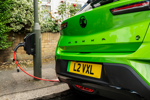Writing in BCA’s 2007 Used Car Market Report, Cooke highlights a potentially lucrative sector that is emerging thanks to a changing mix of demographics, lifestyles, social engineering, tertiary education and economics.
He believes that changing lifestyles increasingly mean both parents or partners in a household will typically be employed outside the home, creating the need for flexible mobility. While their employers or their own business may provide one of the principal cars, the second car may well be family financed.
If there are school-aged children, that second car is increasingly important and, depending on the part of the country and the school, could even become an important status symbol – hence the increased number of 4x4s on the school run.
The growth in tertiary education and debt funding has led to a subtle change in lifestyle with more older children electing, or being forced economically, to live at home, at least until they have finished university.. As they are of driving age, it is inevitable they will want their own car.
Traditionally, their first car has been a low-value, older model, often a private-to-private cash purchase. Cooke suggests dealers might leverage the parents’ economic stability, good credit rating and relatively low insurance liability to upscale these first (and second) car purchases into newer, better models.
Some finance institutions and insurance brokers have cottoned on to this opportunity for finance and insurance gearing, using the established members of the household as guarantors for the children’s cars, insurance and finance.
As Cooke puts it: “Put the default situation back to the parents, lend them the money and trade on their insurance record.”
Given the current practice of selling new and used cars on monthly payments rather than as a one-off charge, a relatively small incremental monthly sum, underwritten by the parents, could completely transform the sort of cars their children are driving.
A second issue that would be likely to lead to the development of the “family fleet” sector is the “precious child” syndrome. Improved safety features are rarely to be found on cheap, old cars.
For dealers to take advantage of this growing market, they must offer a range of vehicles that suits the needs of the family fleet. The entry-level vehicle is likely to be of better quality than the traditional first buy because the buyer may have access to greater funding – and the rules of using that funding may be tighter. The dealer should stock a more focused range of used vehicles.
Cooke suggests the need for a new and innovative finance approach. The family finance package will require the dealership to sell ahead of the business, planning particularly for the gradual enhancement of the product as those buyers seek to change their cars more frequently.
Dealer will need to understand adolescents – they quickly grow into “family fleet” car owners. The dealership wishing to develop the “family fleet” segment may well consider having a specialist car salesperson who can handle such business.
Meeting the needs of the family fleet will require a return to traditional used car values and building an appropriate used car mix in the dealership. The stock may need to be multi-franchise. The inventory may need to be relatively fashionable to appeal to younger family car drivers to encourage them to trade.
Cooke believes stock will require tight management and regular churning as dealers should work on the assumption that family members may seek to change cars within six months. This also requires good database management and regular communication with customers.
#AM_ART_SPLIT# Used car values at record levels
Used car volumes reached a seven-year high of 7.4 million units in 2006, up 2.5% on the previous year, according to the BCA Report. Values are at record levels of £33.9bn, up £1.6bn on 2005 and a staggering £8.5bn up on 2001.
Over the past decade average used car values have risen steadily, from £3,617 to £4,553. Used cars sold by dealers have risen in value over the same period from £5,228 to £6,266.
Values and volumes have been driven by strong demand in the 0-2 and 3-5 year age groups.
Dealers – franchised and independent – have strengthened their hold on the market, with a 1.5 percentage point rise in share to 54.8% and a 209,000-unit rise in volume to 4.08 million cars.
Key points:













Login to comment
Comments
No comments have been made yet.